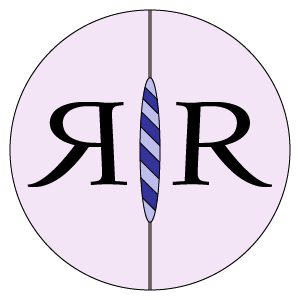Whilst there are now several online platforms for virtual change ringing, the ‘go-to’ platform of most ringers is Ringing Room. It has several domain names, for the different countries in which the various supporting servers are based, with the UK domain being ringingroom.com.
It is the most popular for two reasons – It was the first platform set up, and it is easy to use, appealing to all ringers and not just the most computer literate. It was launched at the end of March 2020 by Bryn Reinstadler and Leland Kusmer, and has had a few updates since then. In fact, it has been described as being continually under development, but it is still relatively straightforward.
Anyone wishing to use it now starts by creating an account using an email address and password. Users can then join a virtual tower by entering a unique 9-digit number, which they will be given by the organiser of any ringing session. New towers can be created and named using the ‘create’ button on the home page. Towers are now persistent, and the tower and server name and tower can be shared as a link.
Once in a tower, a circle of ropes or handbells can be seen in the middle of the page. The current version displays this circle quite large, meaning that it is often necessary to zoom to around 60% to see the whole circle. On the left is a menu showing the tower name and the ringers in the tower. There are also a few buttons allowing the number of bells to be changed and to change between tower and hand bells. (This last one changes the sound heard but has no practical difference to how it works.)
Bells are rung simply by pressing buttons on the computer keyboard. The numbers ‘1-9’ ring bells 1-9 respectively, with ‘0’ working 10, ‘-‘ working 11 and ‘=’ working 12. Alternatively, the space bar will ring whichever bell is at the bottom of the screen on the right-hand side. For people wanting to ring 2 bells at once, the letters ‘F’ and ‘J’ will work the 2 bells at the bottom of the screen, as will the left and right arrow keys. There are a few other keys which can be used to make commonly used calls (“Look to”, “Go”, etc.). A full list of these can be found in the ‘help’ section.
Ringers can be assigned to bells using the ‘assign’ function. By clicking the ‘assign’ button on the left-hand side, a ringer can select whichever bell they want with a mouse click. Their name will then appear next to the bell in question, so that all in the tower will know they are going to ring that bell. This is useful for knowing which bells still need ringers before a touch. Ringers can even assign other ringers to bells by clicking on their name on the left before selecting a bell for them. Ringers can be removed from bells by clicking on the x next to the bell when in assign mode. While you are assigning bells, there is a message in the centre of the rope circle that reminds you to ‘Stop Assigning’ – in addition to which the bell ropes are greyed out.
For most ringing sessions, when the user completes bell assignment, the rope circle will rotate and present the user’s bell or bells at the bottom of the screen. This can also be accomplished by holding down Shift and typing the number of the bell you want to ring. This will move the selected bell to the bottom of the screen on the right-hand side.
A new feature for this platform is the Chat function. This allows ringers to communicate with each other textually. The Chat allows the users to pass comments without leaving the Ringing Room screen.
Whilst it is theoretically possible to use ringingroom.com without any other programs, it would be very difficult to communicate between all the ringers present as the built-in communications function is chat-only. Therefore, it is most often used simultaneously with a video conferencing platform, such as Zoom or Skype. There are many different programs from which to choose. The various benefits of each won’t be discussed here as it’s not overly important. The only important thing is that all the ringers involved can talk to each other, as they would in an actual bell tower. This also allows for calls to be made orally if preferred.
From a performance standpoint, there have been issues, and the developer team has been strengthening the infrastructure to match demand.
James Ramsbottom
Send to a friend
